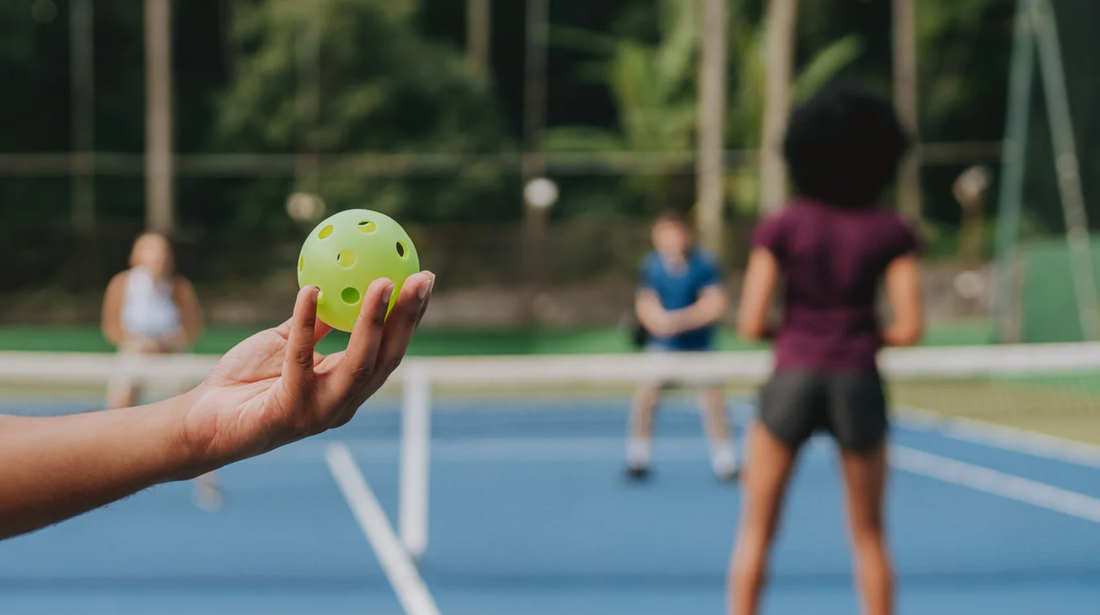
Pickleball and Sustainability: The Future of Eco-Conscious Sports Facilities
Share
Pickleball has quickly evolved from a backyard pastime into one of the fastest-growing sports in the world. With this explosion in popularity comes a surge in new facilities, courts, and communities built around the game. Yet as construction accelerates, an important question arises: how can the pickleball industry grow responsibly without leaving a heavy environmental footprint?
Today, sustainability is no longer just a trend; it’s a necessity. From energy-efficient courts to recyclable paddle materials, pickleball is beginning to lead by example in the movement toward greener recreation.
The Environmental Cost of the Pickleball Boom
The rapid rise of pickleball has led to an unprecedented demand for new playing spaces. Across the United States alone, thousands of courts have been built in just the past few years, many of them converted from tennis or basketball courts. While repurposing existing facilities reduces waste, entirely new developments often require significant resources—cement, lighting, fencing, and maintenance systems that consume both energy and water.
For communities, the challenge lies in balancing access to courts with environmental responsibility. The typical hard court, for example, can generate heat through surface materials and rely on artificial lighting systems that contribute to carbon emissions if not designed thoughtfully.
Building a Greener Court
Forward-thinking developers are already reimagining what sustainable sports design can look like. Some of the most eco-conscious pickleball complexes now incorporate:
-
Permeable court surfaces that reduce stormwater runoff and protect local ecosystems.
-
Solar-powered lighting systems that lower electricity usage while providing consistent illumination for evening play.
-
Recycled or locally sourced construction materials that reduce transportation emissions and landfill waste.
-
Water-efficient landscaping using native plants that require minimal irrigation.
One striking example comes from the Pacific Northwest, where community centers have begun installing modular, recycled-plastic pickleball courts that can be disassembled and relocated as needed. This design not only minimizes waste but also extends the court’s usable lifespan.
Sustainable Design Beyond the Court
Sustainability extends beyond the playing surface itself. Facility operations are increasingly incorporating eco-friendly practices such as:
-
Installing energy-efficient HVAC systems in indoor pickleball arenas.
-
Offering bike racks and EV charging stations to encourage greener transportation.
-
Implementing zero-waste tournaments, where food packaging, water bottles, and even paddles are reused or recycled.
The hospitality side of pickleball—clubs, resorts, and events—is also adopting more conscious choices. Some facilities now use biodegradable balls, compostable food containers, and locally sourced refreshments to minimize environmental impact while promoting community engagement.
Manufacturers Join the Green Movement
The push for sustainability doesn’t stop at the court’s edge. Paddle and apparel manufacturers are also getting involved. A few pioneering brands have begun experimenting with natural materials like bamboo, flax fibers, and recycled carbon composites for paddles. Apparel companies, too, are using organic cotton, plant-based dyes, and recycled polyester to meet the expectations of a new generation of eco-aware players.
These changes may seem small on their own, but together they represent a meaningful shift toward a more responsible pickleball culture—one that values both play and preservation.
The Future of Eco-Conscious Facilities
Looking ahead, the next wave of pickleball facilities will likely be guided by a deeper integration of technology and sustainability. Smart court systems can now monitor energy consumption, adjust lighting based on natural daylight, and even regulate temperature automatically to conserve power.
Community-driven models are also gaining traction. Many cities are now exploring public-private partnerships that prioritize sustainable development standards for new courts. Some even tie local tax incentives to projects that demonstrate measurable reductions in energy and water use.
As pickleball continues its global rise, these forward-thinking practices may set the standard for all recreational sports facilities, signaling a new era where athletic innovation and environmental stewardship move hand in hand.
A Sustainable Rally for the Future
At its heart, pickleball has always been about community, inclusivity, and fun. Embracing sustainability strengthens those same values. By building eco-conscious facilities, choosing responsible equipment, and supporting brands that care about the planet, players and organizers alike can ensure that the sport’s growth remains in harmony with the environment.
Pickleball’s future is bright—and with continued commitment to sustainability, it can also be beautifully green.












